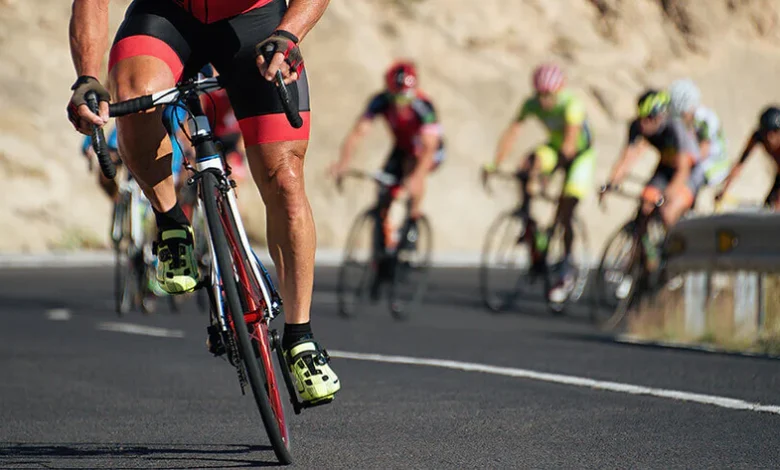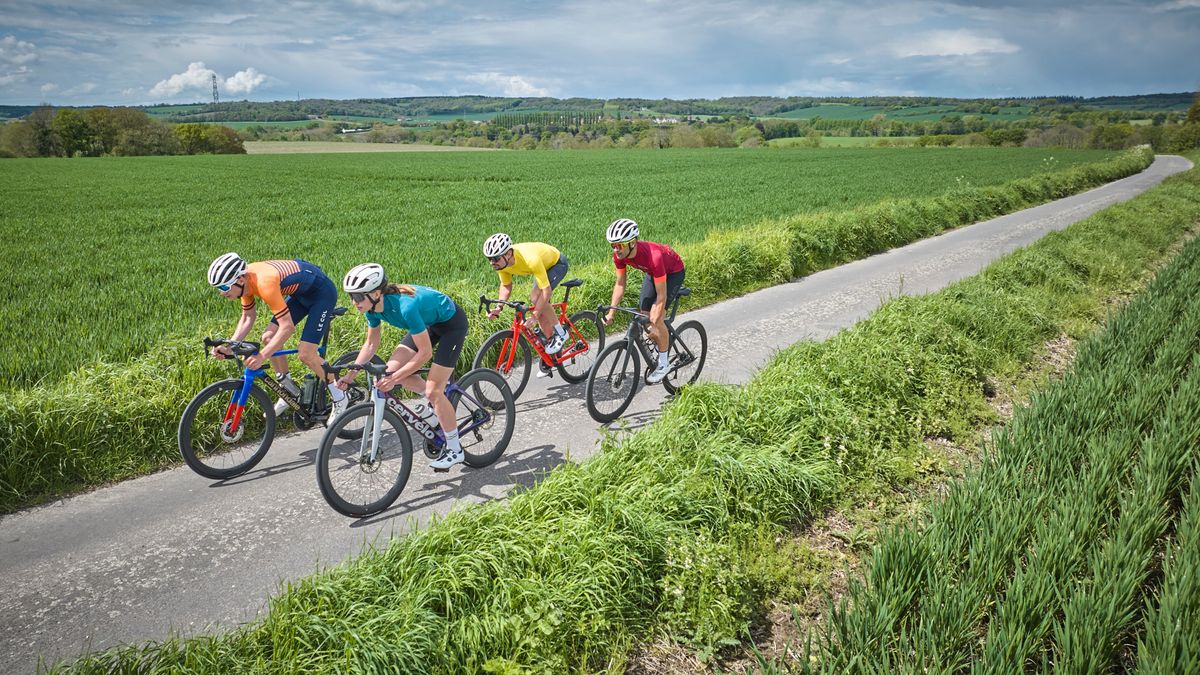Racing Bikes: A Comprehensive Guide to High-Speed Cycling

Racing bikes, also known as road bikes, are specialized bicycles designed for speed, agility, and performance on paved surfaces. These machines are the pinnacle of cycling technology, engineered to deliver maximum efficiency with minimal weight. Whether you’re an experienced cyclist or a beginner looking to enter the world of competitive cycling, understanding the intricacies of racing bikes is crucial. In this article, we’ll explore the different aspects of racing bikes, including their features, types, components, and tips on choosing the right one for you.
What is a Racing Bike?

A racing bike is built specifically for speed and efficiency on smooth surfaces, making it the preferred choice for road cycling enthusiasts and professional racers. Unlike mountain bikes, designed for rugged terrains, racing bikes are optimized for aerodynamics and lightweight construction, enabling cyclists to maintain high speeds with less effort.
Key Features of Racing Bikes
- Lightweight Frame: Most racing bikes are made from lightweight materials such as carbon fibre, aluminium, or titanium. This reduces the bike’s overall weight, allowing for quicker acceleration and easier climbing.
- Drop Handlebars: Racing bikes typically feature drop handlebars, which offer multiple hand positions for comfort and aerodynamics. This design helps riders adopt a more streamlined position, reducing wind resistance.
- Narrow tyres: Racing bikes have thin, high-pressure tyres to minimize rolling resistance and provide a smoother ride on paved roads. The narrow profile also contributes to the bike’s overall speed.
- Efficient Gearing Systems: These bikes have a wide range of gears to handle different terrains and gradients. High-end models often feature electronic shifting for precise gear changes.
- Aerodynamic Design: Every aspect of a racing bike, from the frame geometry to the placement of components, is designed to reduce drag and improve speed.
Types of Racing Bikes

Racing bikes are not one-size-fits-all; they come in various types tailored to different racing and riding conditions. Understanding these distinctions can help you choose the right bike for your needs.
- Aero Bikes:
- Aero bikes are designed for maximum speed and feature aerodynamic tube shapes and integrated components to minimize wind resistance.
- It is ideal for flat terrain and time trials.
- Often heavier than other racing bikes due to their aerodynamic design.
- Lightweight Bikes (Climbing Bikes):
- Built with a focus on low weight, these bikes are perfect for climbing steep hills and mountainous terrain.
- Typically, they have a more relaxed geometry for better control of descents.
- Endurance Bikes:
- Designed for long-distance comfort, endurance bikes feature a more upright riding position and slightly wider tyres.
- It is ideal for cyclists participating in long races or events like Gran Fondos.
- Time Trial (TT) Bikes:
- Specifically designed for solo racing against the clock, TT bikes have aggressive geometry and aero bars for optimal aerodynamics.
- Due to their specialized design, they are not ideal for group rides or varied terrains.
Components of a Racing Bike
Every component of a racing bike plays a crucial role in its performance. Here’s a breakdown of the critical parts:
- Frame:
- The frame is the bike’s backbone, and its material and geometry significantly affect its performance. Carbon fibre frames are famous for their light weight and stiffness, while aluminium frames are more affordable.
- Groupset:
- The groupset includes the bike’s drivetrain and braking components, such as cranksets, derailleurs, shifters, and brakes. Shimano, SRAM, and Campagnolo are the leading manufacturers in this category.
- High-end groupsets offer electronic shifting, which provides precise and effortless gear changes.
- Wheels:
- Racing bike wheels are typically lightweight and aerodynamic, with deep-section rims for reduced drag. Tubeless tyres are becoming increasingly popular due to their improved puncture resistance and lower rolling resistance.
- Saddle:
- The saddle is a crucial component for comfort, especially on long rides. Racing bike saddles are generally narrow and firm, designed to support an efficient pedalling position.
- Handlebars and Stem:
- Drop handlebars provide multiple hand positions, allowing the rider to adopt an aerodynamic or more relaxed stance depending on the terrain and speed.
- The stem connects the handlebars to the frame and can be adjusted to alter the bike’s handling characteristics.
Choosing the Right Racing Bike
Selecting the right racing bike involves considering several factors, including your riding style, budget, and the terrain you’ll be riding on.
- Determine Your Riding Style:
- Are you interested in racing, long-distance touring, or casual group rides? Your intended use will dictate the type of racing bike that suits you best.
- Budget:
- Racing bikes range from affordable entry-level models to high-end machines costing several thousand dollars. Set a realistic budget and look for the best components and features within that range.
- Fit and Comfort:
- A proper bike fit is essential for comfort and performance. Most bike shops offer professional fitting services to ensure your bike is set up correctly for your body dimensions and riding style.
- Frame Material:
- Choose a frame material that suits your needs and budget. Carbon fibre offers the best performance but is more expensive, while aluminium balances performance and cost.
- Test Ride:
- Always test-ride a few models before making a decision. This will give you a feel for the bike’s handling, comfort, and overall performance.
Maintenance Tips for Racing Bikes
Regular maintenance is essential to keep your racing bike in top condition. Here are some tips:
- Regular Cleaning:
- Keep your bike clean by wiping it down after every ride, especially the drivetrain components. This prevents the build-up of dirt and grime, which can cause premature wear.
- Lubrication:
- Lubricate the chain and other moving parts regularly to ensure smooth operation. Use a quality bike-specific lubricant and avoid over-lubricating, as excess oil can attract dirt.
- Tire Pressure:
- Check tyre pressure before every ride. Under-inflated tyres increase rolling resistance and the risk of pinch flats, while over-inflated tyres can lead to a harsh ride and reduced traction.
- Brake and Gear Adjustment:
- Regularly check and adjust your brakes and gears to ensure they function correctly. Poorly adjusted brakes and gears can affect your safety and performance.
- Professional Tune-Up:
- Consider taking your bike to a professional mechanic for a tune-up at least once a year. They can inspect your bike for any issues and make necessary adjustments.
The Future of Racing Bikes
The cycling industry constantly evolves, with new technologies and innovations emerging yearly. Some trends to watch for in the racing bike world include:
- Integration of Smart Technology:
- Expect to see more racing bikes equipped with intelligent technology, such as integrated power meters, GPS systems, and connectivity features for data tracking and analysis.
- Advancements in Aerodynamics:
- Manufacturers continually refine aerodynamic designs, with innovations like integrated cockpits and hidden cables becoming more common.
- Lightweight Materials:
- New materials and manufacturing techniques are making racing bikes lighter and more robust. This trend will likely continue as companies push the boundaries of what’s possible.
- Disc Brakes:
- While disc brakes were once controversial in the racing world, they have now become the standard on most racing bikes due to their superior stopping power and modulation in all weather conditions.
Conclusion
Racing bikes are a marvel of engineering, combining lightweight materials, advanced aerodynamics, and precise components to deliver unparalleled speed and performance. Whether you’re a seasoned racer or a recreational cyclist looking to upgrade your ride, understanding the different types, components, and features of racing bikes will help you make an informed decision. By choosing the right bike and maintaining it properly, you can enjoy the thrill of high-speed cycling and push your limits on the road.


